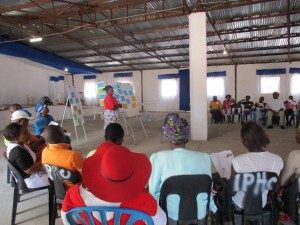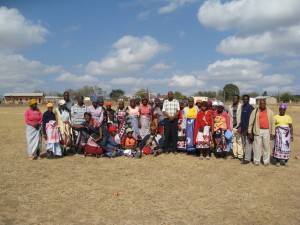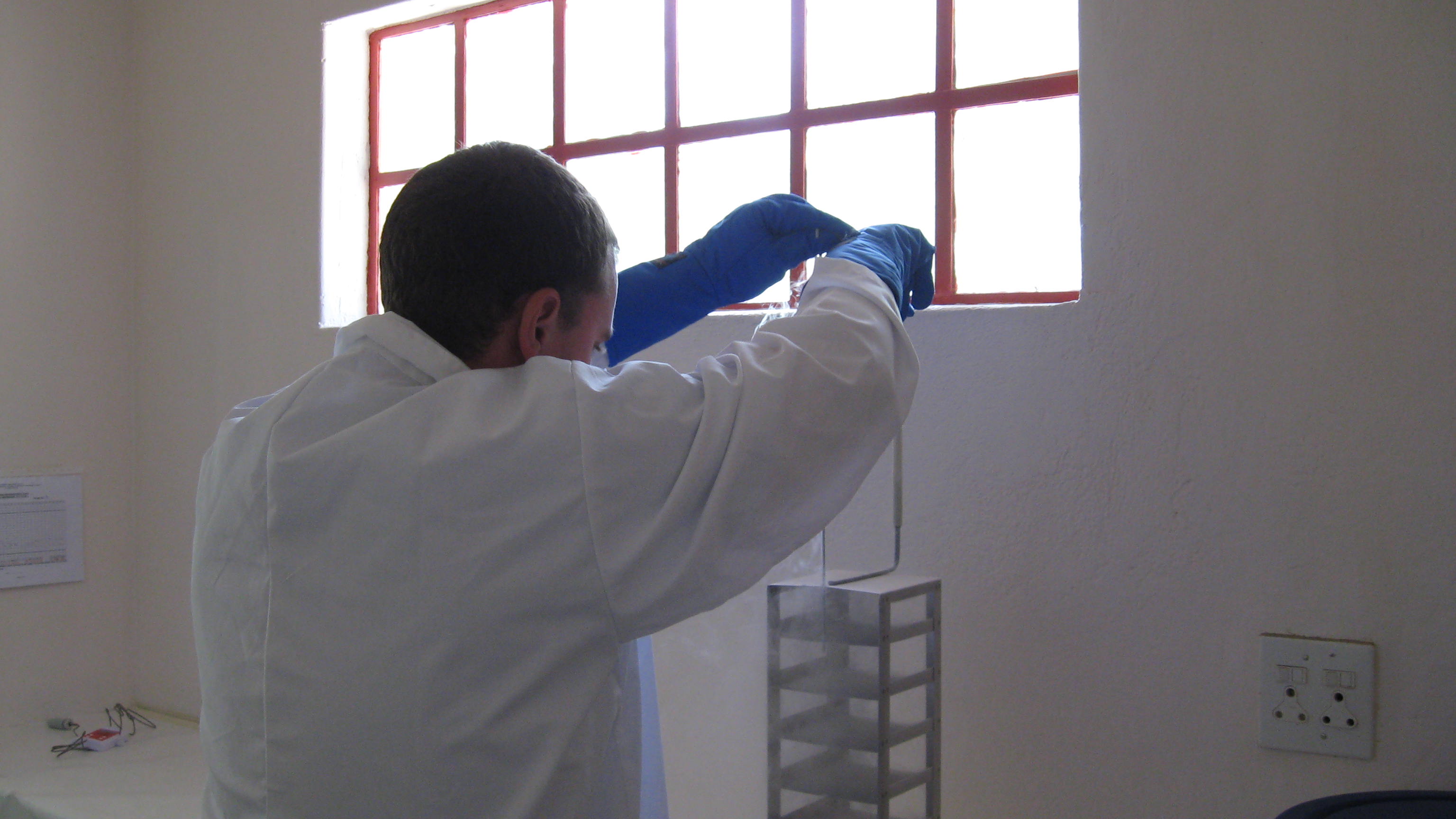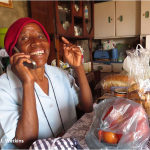Theme leader: Steve Tollman
Verbal Autopsy with Participatory Action Research (VAPAR) – Expanding the Knowledge Base through Partnerships for Action on Health Equity
Funders: Health Systems Research Initiative from Department for International Development (DFID)/Medical Research Council (MRC)/Wellcome Trust/Economic and Social Research Council (ESRC)
Collaborating Institutions: University of Aberdeen; Mpumalanga Province Department of Health; University of the Witwatersrand; and Queen Margaret University. PI: Dr Lucia D’Ambruoso

The VAPAR (Verbal Autopsy with Participatory Action Research) programme is a health systems research initiative to strengthen mortality data, combine this with local knowledge and interpret, plan and act in the health system. The project aims to institutionalize processes to develop the voices of communities on health priorities, and act on this information in partnership with health workers as well as multisectoral managers, planners and policy makers. The VAPAR programme is based on twin premises: i) that there is insufficient information on health and health priorities of vulnerable, and in this case, rural, populations and ii) that there is insufficient utilisation of research evidence on the most marginalised in policy and planning. The theory is that an adaptive process of collaborative learning and action at different levels can stimulate and support decision-making, resulting in improved organisational responsiveness assisting local officials to make and implement decisions to improved services, improved community engagement and trust, and improved health behaviours and outcomes.
For more detail on the VAPAR project please visit the VAPAR website or contact Lucia D’Ambruoso lucia.dambruoso@abdn.ac.uk

Village participants presenting at a Participatory Action Research meeting August 2017
Community-level antibiotic access and use in low- and middle-income countries; finding targets for social interventions to improve rational antimicrobial use (ABACUS) Oct 2017
PhD candidate – Fezile Wagner
 The overall aim of ABACUS is to compare community-based antibiotic access and consumption practices across a range of low and middle-income countries (LMICs) in Asia and Africa in order to inform the design of, and identify targets for community-based intervention strategies that may be used to promote rational antibiotic use. This project provides a standardized framework for appraising current antibiotic use patterns, demand and access, which may subsequently be used in other LMICs. ABACUS is currently underway in 7 of the INDEPTH HDSSs namely: Agincourt- South Africa, Metlab- Bangladesh, Manhiça- Mozambique, Filabavi- Vietnam, Kintampo and Dodowa- Ghana and Kanchanaburi.
The overall aim of ABACUS is to compare community-based antibiotic access and consumption practices across a range of low and middle-income countries (LMICs) in Asia and Africa in order to inform the design of, and identify targets for community-based intervention strategies that may be used to promote rational antibiotic use. This project provides a standardized framework for appraising current antibiotic use patterns, demand and access, which may subsequently be used in other LMICs. ABACUS is currently underway in 7 of the INDEPTH HDSSs namely: Agincourt- South Africa, Metlab- Bangladesh, Manhiça- Mozambique, Filabavi- Vietnam, Kintampo and Dodowa- Ghana and Kanchanaburi.
Projects With Completed Fieldwork
PHIRST – A Prospective Household observational cohort study of Influenza, Respiratory Syncytial virus and other respiratory pathogens community burden and Transmission dynamics in South Africa Feb 2019
Cheryl Cohen from the Centre for Respiratory Diseases and Meningitis, National Institute for Communicable Diseases of the National Health Laboratory Service, South Africa
Study started in December 2016 and completed follow up in December 2018
The aims of this study are to estimate the community burden of influenza and RSV, and to assess the transmission dynamics of influenza and RSV infections in the community. This is a household-level community cohort study, has completed the three year follow up period. At each site 50 households per year were enrolled. We collected baseline data on household composition and medical histories from all members of household, each member of the household was followed up twice weekly throughout the RSV and influenza season and annually thereafter until 2018. Details on respiratory illness symptoms that occur, hospitalisations and deaths from respiratory illness and monthly TB symptom data were also collected. The data should assist policy makers to understand how many people get infected with these various pathogens, understand why and how they are passed from person to person, use this data to plan interventions like vaccines to special groups of people who are at risk of becoming very ill and to make changes to programmes, like the TB programme to improve TB control. Feedback on the study was given at a Community meeting held in November 2018. Data is being analysed and final results will be published during 2019.
Engaging the public in priority setting for health in a rural setting in South Africa
PhD Candidate – Aviva Tugendhaft (PRICELESS) Oct, 2017
In South Africa public participation in decision making processes is entrenched in policy documents and formalised in the national Health Act yet practical examples are lacking. As the country aims to delivery Universal health Coverage through a National Health Insurance (NHI) over the next few years policymakers will face challenges in terms of who and what to cover with their limited budget. Engagement methods that are deliberative could be useful in ensuring the public is included in the priority setting process for NHI in South Africa, and developing the capacity of the public to understand the need for trade offs where demands outweigh the available resources. This study is focused on modifying, implementing and evaluating a specific deliberative engagement tool- the CHAT (Choosing Healthplans All Together) tool to determine if it enables public engagement in priority setting for health in a rural setting in South Africa. The study considers whether the CHAT tool in the Bushbuckridge context facilitates a communal decision-making process where values and opinions are expressed and where capacity of the public to understand the need for trade offs is developed. The study will provide practical lessons on how to involve the public in the priority setting process in the South African context and will identify health service priorities for the Bushbuckridge community, which could inform service delivery decisions. For a presentation of the PhD protocol, click here.
Here is a research brief reflecting the findings of the project, click here
e/mHealth – Vutivi Project (Knowledge) PhD project Dec 2016
Collaboration with MRC/Wits Health Policy Research Group and Warwick Medical School UK, funded by the ESRC and GE Healthcare ltd. (Principle investigator: Jocelyn Watkins)
Introduction: South Africa presents a relevant case study to examine where and how e/mHealth may play a role within the care cycle and assist rural communities in the barriers faced by accessing healthcare. Semi-structured interviews, focus groups and non-participant observations in clinics and in the community with n=256 people including patients with chronic diseases (aged 18-90), pregnant women (18-36), nurses, doctors, clinical associate students, home-based carers, optometrists, traditional healers, community members, key e/mHealth experts and Government policy makers (district, provincial and national Department of Health).
Results: Findings are presented in four case studies:
Case Study 1: Landscape of e/mHealth in rural South Africa to identify the different players/stakeholders involved.
E.g. Digital providers, Front-end users, Mobile operators, Policy advocates, Designers etc.
Case Study 2: Mobile health communication between Patients and Health Worker
E.g. a) MomConnect (DOH national mHealth programme) to register all pregnant women at their first ANC booking and receive staged-based messaging on educational pregnancy advice to their cell phones.
b) Nkateko Phone call reminders from lay health workers to hypertensive patients to remind them to come to their clinic appointment
Case Study 3: Mobile health communication between Health Worker (at the coal face) and Other (Health Worker/Specialist clinician/Website/App)
E.g. a) Stop Stockouts Campaign – patients or health workers send a SMS or call a number to alert the DOH when there is a drug shortage at the clinic or hospital.
b) Web literacy of nurses using search engines such as Google
c) Patient referrals made by district doctors to tertiary doctors via Whatsapp (image or text)
Cast Study 4: Use of Portable Ultrasound for pregnant women
E.g. a) How pregnant women feel about either having an ultrasound or wanting to have one
Conclusion: e/mHealth is feasible and acceptable and to some degree already in use but usually in a ad-hoc informal way. Enhancing healthcare through the use of digital communication has potential where its implementation is integrated within this normalisation
PEECHi (Programme for the Economic Evaluation for Maternal and Child Health interventions) Dec 2016
Collaboration with PRICELESS, Health Systems Trust and the MRC Burden of Disease Unit
This project used economic evaluation to provide evidence for priority setting to guide investments for better maternal, newborn and child health. The focus was on identifying and assessing the most affordable, effective and scaleable interventions to improve maternal and child health in Ehlanzeni district, Mpumalanga Province. The MRC/Wits Rural Public Health and Health Transitions Research Unit (Agincourt), which includes an established population-based research centre with a longitudinal health and socio-demographic information platform, contributed to this by providing empirical data on rural communities in northeast South Africa. This report “Mortality of Children Under 5” alerted the Department of Health that over 50% of children under 5 die at home.
Integrated Chronic Disease Management model – Vunene (Goodwill) study July 2015
Principal investigator: Dr. Soter Ameh
Co-investigators: Dr. Francesca Xavier Gómez-Olivé, Prof. Kathleen Kahn, Prof. Stephen M. Tollman and Prof. Kerstin Klipstein-Grobusch
South Africa faces a dual burden of chronic communicable (e.g., HIV) and non-communicable (e.g., hypertension) diseases. In a response, the National Department of Health initiated the Integrated Chronic Disease Management (ICDM) model as a pilot (on-going) programme in selected primary health care (PHC) facilities in Mpumalanga, North West and Gauteng Provinces in South Africa. The overall goal of the ICDM model is to leverage the positive lessons learned from the use of the tools and systems in HIV programme to scale up services for NCDs; improve the quality of chronic disease care for better health outcomes; reduce chronic disease mortality and morbidity; and more efficiently meet patients’ health needs. The aim of the Vunene study was to contribute to understanding the effectiveness of the ICDM model in improving the quality of chronic disease care and patients’ health outcomes.
A four-year longitudinal study was conducted from January 2011 to December 2014 [two and half years retrospective records review (January 2011 to June 2013) and one and half years prospective study (July 2013 to December 2014)] in 12 PHC facilities in Bushbuckridge sub-district of Mpumalanga Province, north-east South Africa. To better understand the effectiveness of the ICDM model in improving patients’ health outcomes, seven PHC facilities were categorised into the ICDM model facilities (n=435) where the ICDM model was implemented and five comparison facilities (n=443) where the ICDM model was not implemented.
The preliminary result of the structural equation modelling in the ICDM model facilities showed there was regular supply of critical drugs as well as better coherence in HIV and NCD services. However, services in the priority areas of hospital referral, defaulter tracing, pre-packing of medicines, clinic appointment and patient waiting time were not significantly associated with good quality of care; hence the need to strengthen services in these areas in the study setting. The segmented regression analysis showed that the ICDM model had an effect on the month-to-month increase in the percentage of HIV/AIDS patients on antiretroviral treatment with CD4 counts ≥ 350 cells/μl in the ICDM model facilities, but had no effect on the month-to-month changes in hypertension control (blood pressure<140/90 mmHg) for hypertensive patients on antihypertensive treatment in both study arms. This implies that the purpose for which the ICDM model was initiated – to leverage HIV programmes, tools and systems to scale up services for NCDs – is yet to be achieved in the study setting.
The Vunene study was funded by the MRC/Wits Rural Public Health and Health Transitions Research Unit (Agincourt) South Africa, through the Wellcome Trust, UK; African Doctoral Dissertation Research Fellowship Programme, Nairobi, Kenya; and Fogarty International Center of the National Institutes of Health
Please download this award winning poster….Facility Feedback 2015… to find results from this study.
Engaging Traditional Healers in Agincourt, South Africa June 2015
Collaboration with Carolyn Audet, Vanderbilt University
In both rural and urban sub-Saharan Africa, traditional healers typically hold positions of authority within their communities. Unlike physicians, traditional healers are thought to be able to diagnose and treat physical and emotional ailments resulting from 
curses, and sorcery. People seek care from traditional healers due to social acceptability, perceived source of illness, personal relationships between healers and their patients, as well as the perceived fit of a healer’s explanation of illness with patient expectations. Healers often outnumber clinicians, especially in rural or peri-urban areas. In sub- Saharan Africa, it is estimated that 80% of the population have visited a traditional healer. When experiencing illness, it is common for patients to Ping-Pong back and forth between the allopathic health system and the traditional health system, potentially leading to delays in care, interruptions or abandonment of treatment, and herb-drug interactions.
Given this complex, plural-seeking behaviour, this work seeks to create a matrix to identify and link traditional and allopathic illness diagnoses with the goal of identifying disease-specific traditional treatments (frequency and duration), expected prognoses and direct treatment costs. With a particular focus on schizophrenia, epilepsy, HIV, and TB we are learning about traditional illnesses associated with these allopathic diagnoses, modes of transmission and acquisition, traditional treatment offered in the Bushbuckridge area, and the costs associated with traditional healer services. With 10 qualitative interviews of traditional healers and 10 with nurses already complete, we have refined a quantitative survey to gather data from 160 healers in the area. Our long-term goal is to establish a sustainable and acceptable system for healer integration into the health system to improve chronic and acute health outcomes among people living in the Agincourt area.
Epidemiology and treatment of epilepsy in sub-Saharan Africa (SEEDS)
Collaboration with KEMRI/Wellcome Trust, Kilifi and and World Health Organization (Geneva)

The aim of epilepsy work in Agincourt is to measure the burden of epilepsy in rural South Africa, and identify cost-effective interventions aimed at reducing the burden through decreasing the treatment gap and improving the quality of life of people with epilepsy. Work will result in the development of a package of tools for economic evaluation applicable to other conditions (such as cardiometabolic diseases) in a range of African settings. This research will provide insight into management of a non-infectious chronic illness that spans all age groups and has been undertaken with close collaboration from health care service providers.


